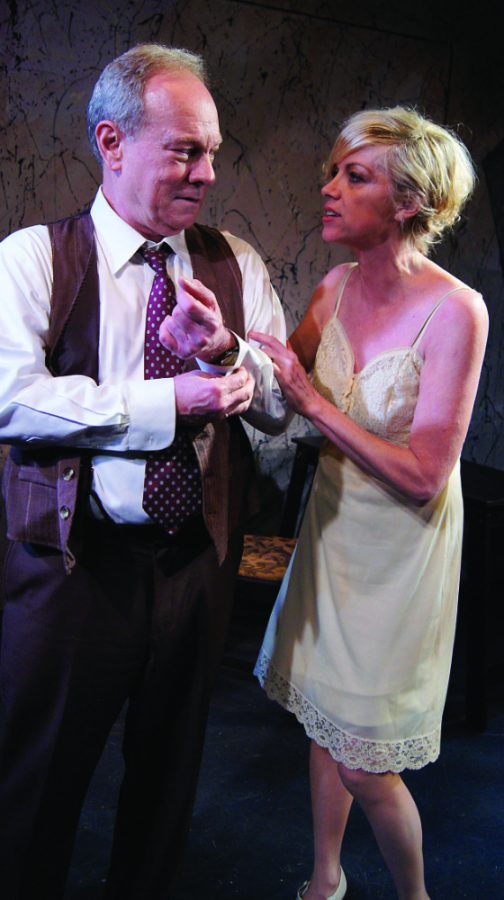Nothing dead about this salesman
Following the wrong dream in ‘Death of a Salesman’
“Death of a Salesman” runs until March 26 at the Redtwist Theatre (1044 W. Bryn Mawr). Tickets are available at the box office with varying prices.
March 14, 2017
For a play as well known as “Death of a Salesman,” written by Arthur Miller and directed by Steve Scott, to break new ground is a difficult task. Fortunately, at the Redtwist Theatre in Edgewater, this was no problem.
Driven by the strikingly powerful performance of Brian Parry as Willy Loman, the devastation of Miller’s story is pounded home. Given the limitations of the stage space at the Redtwist, with its narrow room featuring chairs on both sides of the stage, the physicality of a performance is crucial. Both Parry and Matt Edmonds, as Biff Loman, Willy’s eldest son, brought viewers into the visceral conflict between the two characters.
The unique stage at the Redtwist allows play-goers to step right into a story, and with a story as dynamic as that of Willy Loman and his family, this presents the perfect opportunity to do so.
Following a failed businessman as he struggles to find meaning in his and his son’s life is a story that demands the audience feel each transgression and emotion being etched out. The wonderfully understated performance of Jan Ellen Graves as Linda, Willy’s long suffering wife, pulled the gravity of the stage toward her with each line of dialogue. The audience can sense the betrayal, fear and disillusion as Linda sees her entire world collapsing in front of her.
As a whole, Redtwist’s staging of “Death of a Salesman” was an intimate affair. However, that does not mean the production of the show was anything less than stellar. Sound Designer Karli Blalock used the auditory hallucinations of Willy Loman to great effect, bouncing the voices in his head off the walls and making the space feel as though it was closing in on the stage. While minimal, it allowed the audience to see into the mind of Willy, as did the lighting. In scenes featuring Willy delving into his past while talking with his long-lost brother Ben, played by Ted Hoerhl, the lighting became almost surreal, focusing on Ben while leaving Willy somewhat obscured, much like the haze of Willy’s mind as he slowly unraveled.
While the story does not have a traditional villain, Willy’s boss Howard is the closest thing to it. Played with merciless smarm by Michael Sherwin, the one scene he is featured in encapsulated the brutal reality of an old man losing his place in his industry. Juxtaposed by the futuristic toys that Howard is enamored with, Willy seems even more anachronistic. He struggles with a toy for a society that has left him behind, unable to accept the reality of his life. In much the same way that Sherwin takes advantage of his single scene to make an impression, Adam Bitterman as Charley, Willy’s neighbor and verbal sparring partner, steals every scene he is in. His worn in, pitch perfect Brooklyn accent and dry delivery provide the plays few moments of respite from the ever mounting pressure cooker of Arthur Miller’s story.
Staging a play as classic as “Death of a Salesman” is an inherently difficult task, but Steve Scott and the Redtwist Theatre are up to the task.
Led by the dynamic performance of Parry as the titular salesman, this staging is unequivocally a success. Excellent performances from top to bottom, as well as the excellent lighting and sound design work to create a truly breathtaking performance.








